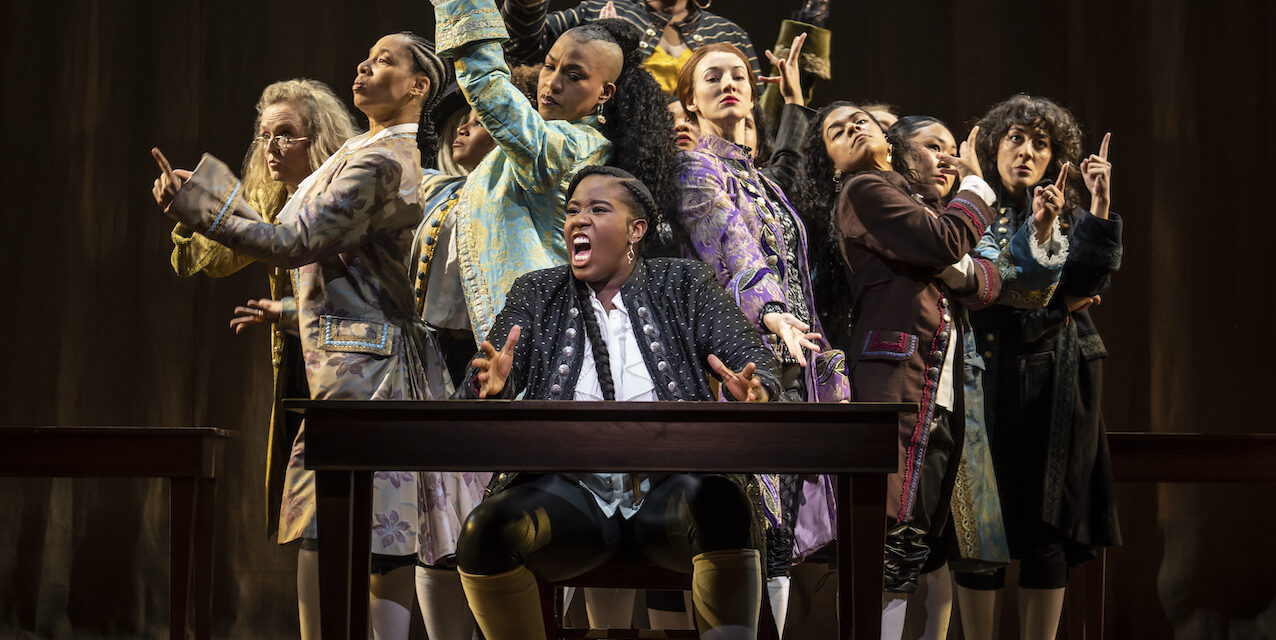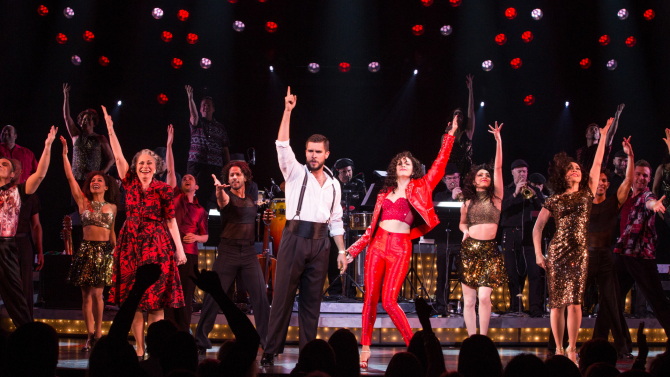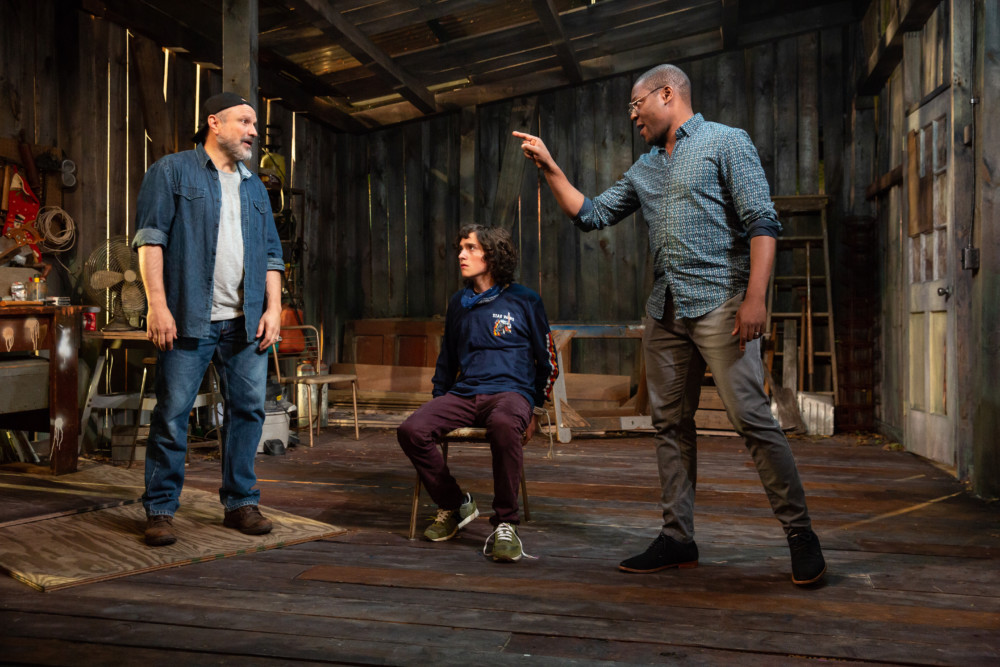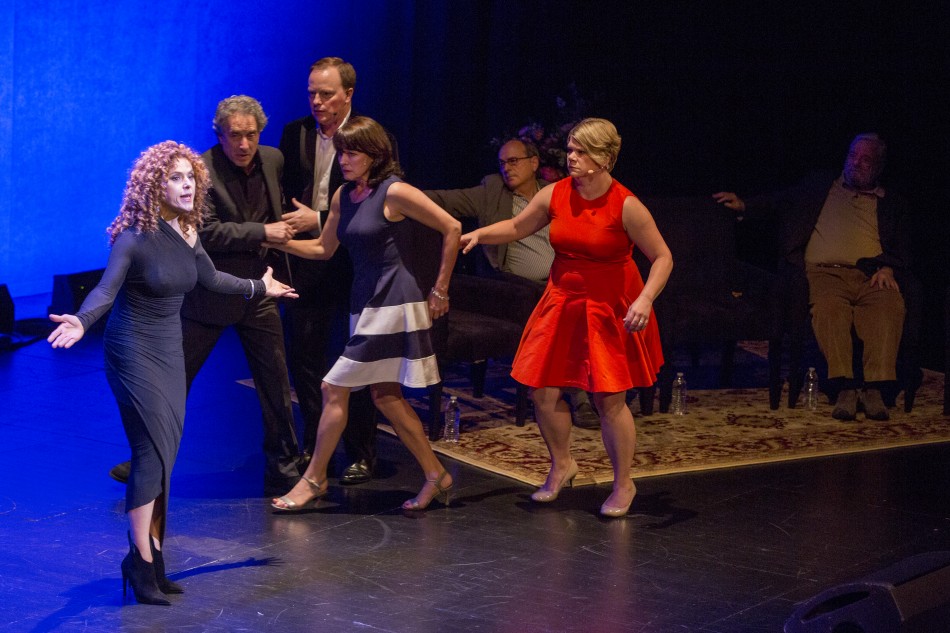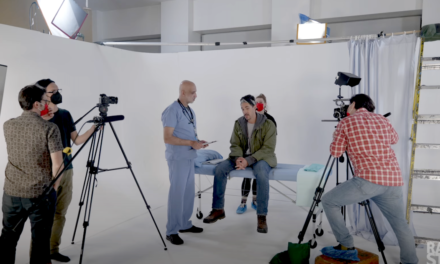By Samuel L. Leiter . . .
1776, Sherman Edwards and Peter Stone’s historical drama about the signing of the Declaration of Independence, which won multiple Tony and other awards in 1969—even beating out Hair for the Best Musical Tony—was a surprise hit that, over half a century later, is still well worth a Broadway revival. Apart from a 2016 Encores presentation, it has heretofore received only one such resuscitation, a multi-award winning one in 1997. Misguided as is the Roundabout version now on view at the American Airlines Theatre, it nevertheless reveals the continued viability of 1776’s combination of historical fact and dramatic liberty, containing much that continues to be historically, educationally, and theatrically engrossing and contemporaneously relevant.
Despite being written for a large dramatis personae of historical white men, however, with only two female roles (Abigail Adams and Martha Jefferson), director Diane Paulus has cast it with a multi-ethnic cast of female, trans, and nonbinary actors. The intent, of course, is to illuminate the nature of the America we are now in the light of the America we were then, when such diversity was so notably absent from American representation. The ironies of hearing slavery, for example, discussed in such a context, need no further explanation. As for everyone else, they’ve come a long way, baby (if not yet far enough).
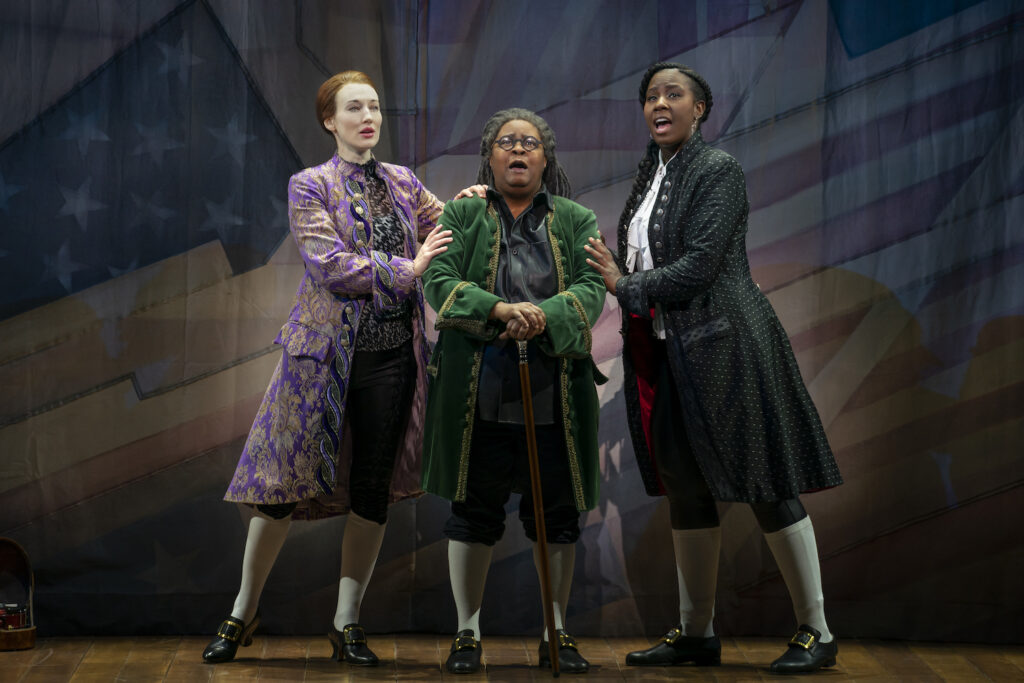
Gender-blind casting like this, largely familiar in school productions at same-sex institutions, but only rarely seen professionally (like the non-male Julius Caesar at St. Ann’s Warehouse a few years ago) is far from new, but, in 1776, once the initial impression fades, it serves little purpose. On the one hand, it continually draws attention to the fact that these actors aren’t men, and, on the other, regardless of their obvious talent, that they often differ so strikingly in manner, appearance, and even age from the persons they’re portraying that, whatever the veracity of the story they’re enacting, it’s impossible to accept them as who they’re supposed to be. And, whether they be wigs or not, the variety of modern hairdos on display (supplemented by adornments like earrings and nail polish) serves as a continuous reminder that this is make-believe, making it impossible to take the material as seriously as intended.
For those unfamiliar with the show, 1776 brings to life the personal and political antagonism of representatives to the Second Continental Congress in Philadelphia. There, John Adams (Crystal Lucas-Perry) of Massachusetts struggles to convince the 13 states of the necessity for, first, independence from British tyranny; and second, ratification of a written declaration of that independence by its gifted but reluctant author, the laconic Thomas Jefferson (Elizabeth A. Davis, with a notable baby bump) of Virginia. The bitter conflicts among the members are reminiscent of those in our currently dysfunctional Congress, but—even though deeply painful—the founders’ ability to compromise in order to find unanimity is a capacity that no longer seems possible. Without it, the Declaration of Independence, flawed as it is, would never have been ratified, and the Revolution thereby hamstrung.
Discussion of the first issue introduces what is otherwise a generally conventional musical, with expository and emotional songs performed on a more or less regular basis. There is, however, a nearly half hour scene of debate that is strictly dialogue drama. Given how compelling and informative that debate is, we should be grateful that Edwards and Stone found it impossible to come up with songs worthy of interrupting it.

There’s much to absorb in 1776, with so many characters representing so many points of views. However, those making the most distinctive arguments, such as the obstreperously conservative John Dickinson (Carolee Carmello) of Pennsylvania, who sees no reason to revolt against Britain, or the crafty but determined Edward Rutledge (Sarah Porkalob) of South Carolina, who objects to a clause condemning slavery in what would be called the “Declaration of Independence,” are vivid antagonists to Adams’s appeal for revolt. Regardless of our knowing the outcome, dramatic tension tightens considerably as Adams and his supporters, like Jefferson, Ben Franklin (Patrena Murray) of Pennsylvania, and Richard Henry Lee (Shawna Hamic) of Virginia, among others, seek ways to gain their votes.
Despite all the historical issues and numerous characters, Edwards and Stone manage to hold our interest by humanizing their central figures with scattered humor, some of it mildly risqué, and personal sidebars. These include Adams’s imagined dialogues with his wife, Abigail (Allyson Kaye Daniel, for some reason dressed in a flowery dress and turbaned hairdo, creating a West Indian vibe), and Jefferson’s visit to his, Martha (Ariella Serur, standby for Eryn LeCroy), both partly intended to express each man’s connubial bliss. (The prospect of a very pregnant, violin-playing Jefferson fiddling with his young bride is unavoidable.) Nearly all the musical numbers have value, but most especially when they have political themes. The best example is “Molasses to Rum,” which, led by South Carolina’s Rutledge, attacks the hypocrisy of New Englanders rallying against slavery when it is their business interests that support it.
Ms. Paulus’s staging, with choreography by Jeffrey L. Page, has a barebones Brechtian quality; it uses a low-slung traveler curtain with faded flag images placed before a Scott Pask set—expertly lit by Jen Schriever—largely restricted (until a late reveal) to bland wooden desks. David Bengali’s clever video projections, including the Trumbull painting of the Declaration’s signing, help greatly. Much of the action is directed or choreographed to within an inch of its life, with actors striking rhythmic poses and the like.

Before the action proper begins, the familiar “we’re regular people about to do a show” trope allows the company to line up in modern dress and, as the beat goes on, transform into the period costumes, designed without undue pedantry by Emilio Sosa, which they’ll wear throughout the next two hour and 40-minutes. I’m not sure, though, why, in the modern dress moments, it was necessary to give a trans actor a sheer top to display their absent breasts, but there it was.
Given the odds faced in bringing credibility to their roles, it’s not surprising that so few succeed. Ms. Carmelo, in a green surcoat, her hair coiffed in flaming Rhonda Fleming waves, her condescending smile shedding beams of light, brings her innate charisma to the royalist Dickinson, but Ms. Lucas Perry’s Adams, considered obnoxious and unlikable, is nothing of the sort. Liz Mikel’s John Hancock is commanding as president of the Congress, Patrena Murray’s Franklin provides comic relief as that wise old owl, and Ms. Davis is a rather vacant Jefferson; however, Ms. Porkalob’s Rutledge brings sizzling slyness to her recalcitrant southerner.
Without a bastion of cis-gender males playing cis-gender males, 1776 has to run on testosterone fumes to maintain its virility. Naturally, it has much to recommend it, such as the singing of several of its songs—timbre be damned—but those unable or unwilling to attend, or those who’d like a point of comparison, can tune in to the 1972 movie, with many of the original cast members; it’s free on Tubi, but you do have to watch the ads!
1776. Through January 8 at the American Airlines Theatre (227 West 42nd Street, between Seventh and Eighth Avenues). Two hours, 45 minutes, with one intermission. www.roundabouttheatre.org
Photos: Joan Marcus


